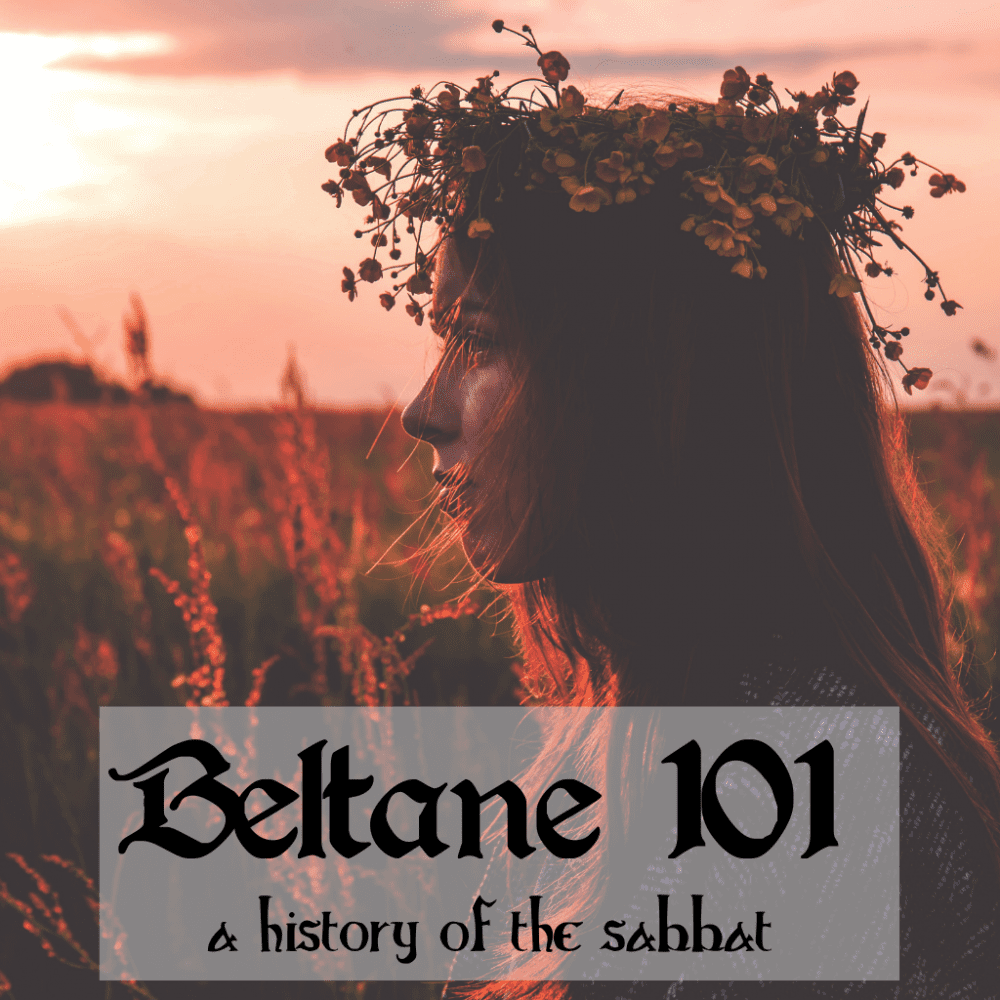
Learn about the sabbat Beltane. Its origins, why it was celebrated traditionally, and its modern interpretations.
What is Beltane?
Beltane is one of the eight sabbats on the Wheel of the Year. The sabbats tend to reflect each season, with Beltane being the halway point between the Spring Equinox and the Summer Solstice. The theme of this holiday tends to reflect that of nature during this time. Spring is in full swing, flowers are blooming, the birds are building nests for their young, many animals are seeking mates, and farmers are planting their fields in preparation of the abundant Summer months. It is a celebration of the fertility and prosperity of the world during this warm time of growth and abundance. Traditionally, Beltane was celebrated from sundown on April 30th through to sundown on May 1st (for the Southern Hemisphere, this would be Oct 31st-Nov 1st).
As one of the four fire festivals, Beltane is a cross-quarter holiday along with Imbolc, Samhain, and Lughnassadh. These sabbats were celebrated with large bonfires often to represent the Sun and its transition throughout the seasons. In fact, the name Beltane is derived from the name of the Celtic god Belenes, or Bel, and the word tene meaning “fire”.
As opposite from Samhain on the Wheel of the Year, Beltane is also associated with a “thinning of the veil”. It is believed that during this time it is easier to connect with beings that exist on other planes, such as the dead or during this time of year in particular, the fae.
Other Names or Similar Holidays
May Day
Beltaine – Celtic
Bealtaine – Irish
Bealltainn – Scottish Gaelic
Floralia – Roman festival
Calan Mai – Welsh
Origins
The origins of Beltane come from the Celtic festival of Beltaine, which was predominately celebrated in Ireland, Scotland, and the Isle of Man. This time marked the halfway point of the Celtic year and the beginning of Summer. The earliest mention of the holiday was in an Irish medieval text known as Sanas Cormaic, written by Cormac mac Cuilennáin king-bishop of Munster sometime before the year 908.

The Importance of the Maypole
The maypole is traditionally a tree that was brought into the village and decorated with paints, ribbons, and a floral wreath crowning the top. People were known to dance around the maypole, weaving the ribbons around in celebration of love and fertility, this is called a maypole dance. The maypole itself is a symbol of fertility, with the phallic pole representing masculinity or projectivity, while the floral wreath at the top represents femininity or receptivity.

The Beltane Bonfire
As you may have noticed, the sacred bonfires of Beltane held much weight in these communities during the celebration. The fires were thought to have healing, protective, and cleansing properties. To create a sacred Beltane fire required wood from nine different species of trees, the fire was then lit with only a friction method (not a flint and steel). People would often snuff out their own household fires, and then relight them from the sacred communal bonfires. Farmers drove their cattle between two large bonfires on their way to their new Summer pastures. This was believed to protect them from disease, thus ensuring the next year’s food supply.
Traditions
Druids would collect the dew prior to Sunrise on May 1st. This water was believed to have magickal powers such as healing ailments or creating beauty.
Handfastings and other pagan wedding celebrations often take place during this sabbat as it is a time to celebrate love and fertility.
Special oatmeal cakes are a popular food item for this sabbat. Often the cakes had knobs that could be torn off to sacrifice into the bonfires as an offering.
Decorating the interiors and exteriors of homes with flowers during this time was a common practice to celebrate the fertility of the land. The most common were yellow flowers such as primrose and marigolds. Cows were also decorated with flowers as well.
The May Bush was a small thorny tree or large bush, and was decorated with flowers, ribbons, and so on. People could have a May Bush for their home or for their community as a whole. Dancing around it was thought to bring good luck!
Couples would often spend the night in the forest together on the Eve of Beltane, they would return in the morning bearing floral decorations for the homes. This was sometimes termed a Greenwood Marriage.
May Baskets would be filled with small candies, baked goods, and flowers. They were placed on the doorknobs of neighbors as tokens of friendship.

Don’t Miss your FREE Beltane Grimoire Page!
Did you know I use Canva to make all the graphics I use here on my website? Click here to try it out for yourself!
More on Beltane
3 Simple Recipes for your Beltane Feast
10 Ways to Celebrate Beltane During Quarantine
Pin it for Later


My Sources
Britannica
Goddess and Greenman
Llewellyn’s Sabbat Essentials Beltane
Leave a Reply